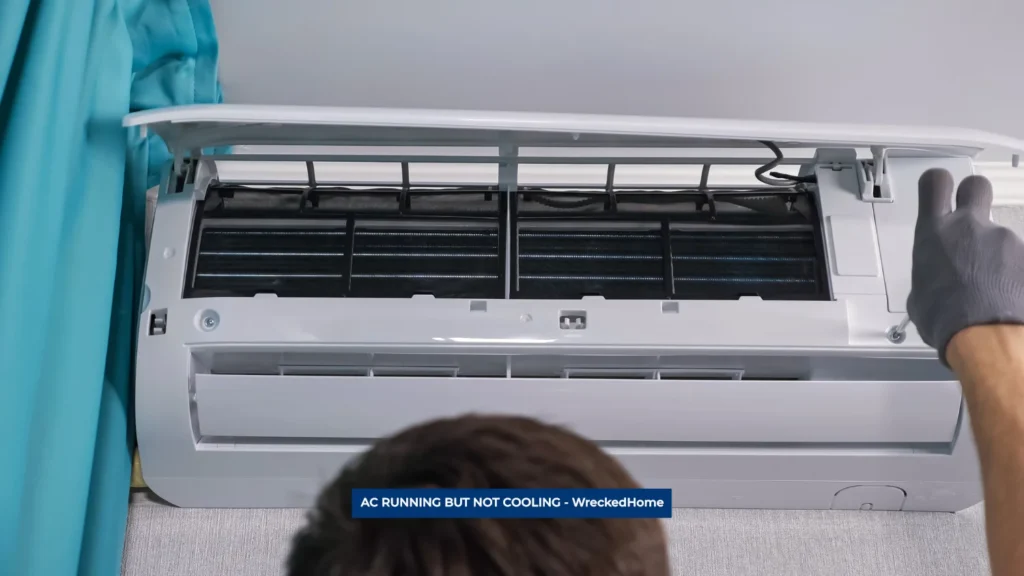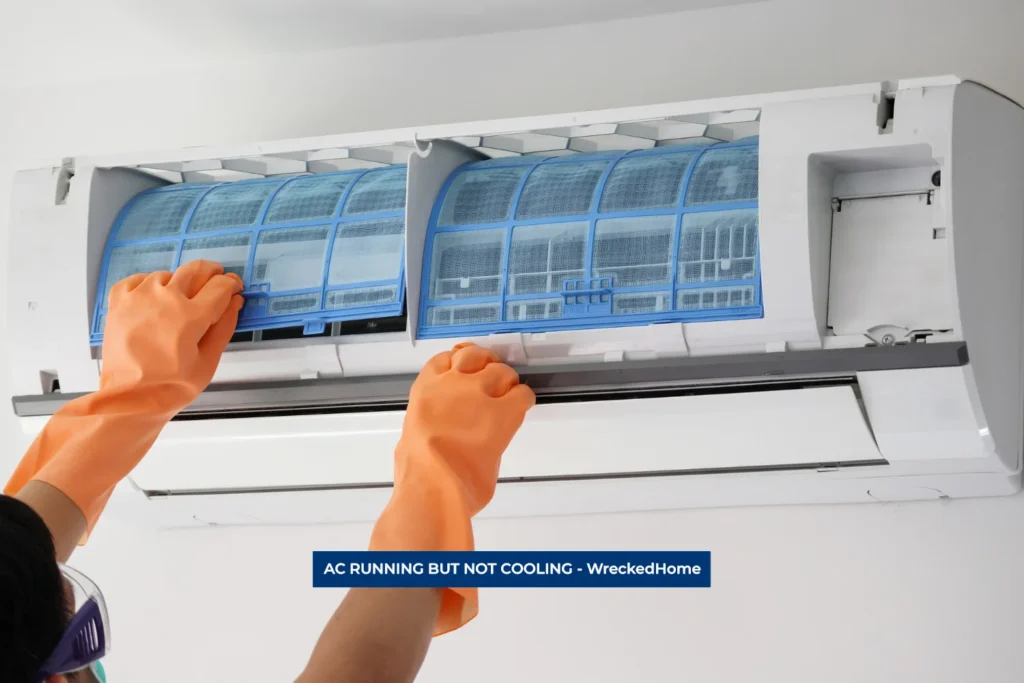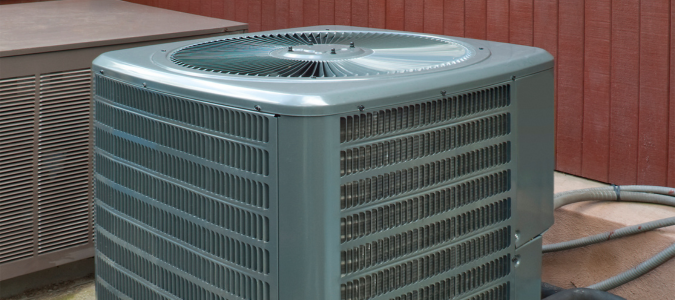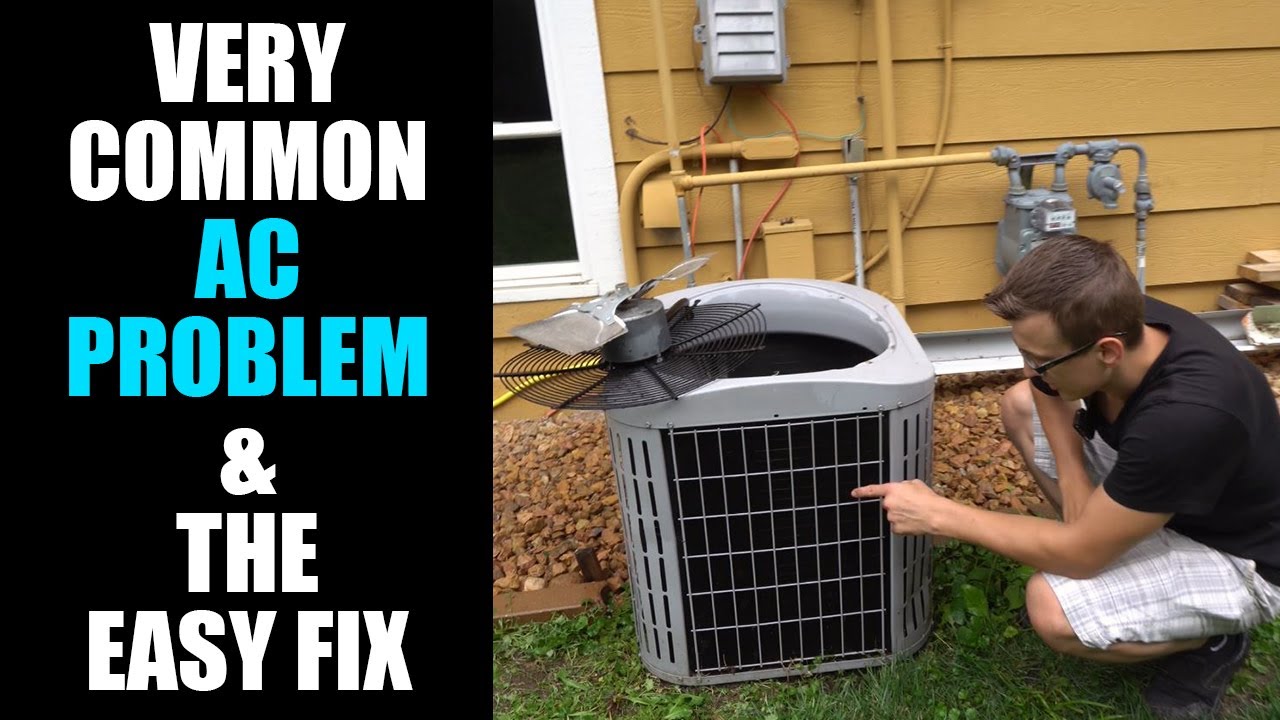Ac Unit Is Running But Not Cooling House

It's a frustrating scenario: your AC unit is running, you can hear the fan humming, but your house stubbornly refuses to cool down. This problem is surprisingly common, and thankfully, many potential causes can be addressed with a little troubleshooting. This guide will walk you through the most likely culprits and help you determine the best course of action.
Understanding the Basics: How Your AC Should Work
Before diving into the problems, it's important to understand the basic workings of your air conditioning system. Essentially, your AC works by removing heat from inside your home and transferring it outside. This process relies on a few key components:
- Refrigerant: Think of refrigerant as the "blood" of your AC system. It's a special chemical that circulates through the system, absorbing heat inside your home and releasing it outside.
- Compressor: The compressor is the heart of the system, responsible for pumping the refrigerant throughout the coils. It increases the pressure and temperature of the refrigerant.
- Evaporator Coil: Located inside your indoor unit (usually part of your furnace or air handler), the evaporator coil absorbs heat from the air blowing across it, cooling the air that circulates through your home.
- Condenser Coil: Located outside, the condenser coil releases the heat absorbed by the refrigerant into the outside air. A fan helps to dissipate this heat.
- Expansion Valve or Metering Device: This controls the flow of refrigerant into the evaporator coil.
- Blower Fan: The blower fan inside your indoor unit circulates air across the evaporator coil and distributes the cooled air throughout your home's ductwork.
When your AC is running but not cooling, it means something is disrupting this heat transfer process.
Possible Causes and Troubleshooting Steps
Here's a breakdown of common reasons why your AC might be running but not cooling, along with troubleshooting steps you can take:
1. Dirty Air Filter
This is often the first thing to check. A dirty air filter restricts airflow, which reduces the amount of air that can pass over the evaporator coil. This reduces the AC's ability to absorb heat and cool your home. It also makes your system work harder, potentially leading to further problems.
Troubleshooting:
- Check the Filter: Locate your air filter (usually in the return air vent or inside the air handler).
- Inspect the Filter: If the filter is visibly dirty (covered in dust and debris), it needs to be replaced.
- Replace the Filter: Use the correct size and type of filter recommended for your system. Most filters have the size printed on the side.
- Frequency: Change your filter every 1-3 months, or more frequently if you have pets or allergies.
2. Dirty Condenser Coils
The condenser coils, located in the outdoor unit, release the heat absorbed from inside your home. If these coils are covered in dirt, leaves, grass clippings, or other debris, they can't efficiently dissipate heat. This causes the refrigerant to remain too warm, reducing the cooling capacity of the system.
Troubleshooting:
- Turn Off the Power: Always turn off the power to the outdoor unit at the breaker box before cleaning it.
- Visually Inspect: Check the condenser coils for dirt and debris.
- Clean the Coils: Use a garden hose with a gentle spray nozzle to rinse the coils from the inside out. Avoid using a high-pressure washer, as it can damage the delicate fins. You can also use a fin comb to straighten any bent fins.
- Clear Surrounding Area: Ensure there is adequate clearance (at least 2-3 feet) around the outdoor unit for proper airflow. Remove any vegetation or obstructions.
3. Frozen Evaporator Coil
A frozen evaporator coil is another common problem. When airflow is restricted (due to a dirty filter, blocked vents, or a malfunctioning blower fan), the evaporator coil can get too cold and freeze over. Ice acts as an insulator, preventing the coil from absorbing heat effectively.
Troubleshooting:
- Check for Ice: Inspect the evaporator coil (you may need to remove an access panel on your indoor unit – consult your owner's manual). Look for visible ice buildup.
- Turn Off the AC: If you see ice, turn off the AC system immediately. Only turn off the AC. Keep the fan running. This will help to melt the ice.
- Address the Cause: While the ice melts, address the underlying cause of the freezing (e.g., replace the air filter, clear blocked vents).
- Wait and Restart: Allow several hours for the ice to melt completely. Once melted, turn the AC back on. Monitor the system to ensure the problem doesn't recur.
- Professional Help: If the coil freezes again quickly, or if you can't identify the cause, call a qualified HVAC technician. There may be a refrigerant leak or other underlying issue.
4. Refrigerant Leak
Refrigerant is essential for cooling. If there's a leak, the system won't have enough refrigerant to effectively absorb and transfer heat. This is a serious issue that requires professional attention.
Symptoms of a Refrigerant Leak:
- AC running but not cooling
- Ice buildup on the evaporator coil (as mentioned above)
- Hissing or bubbling sound coming from the AC unit
- Higher than usual energy bills
Troubleshooting:
- Do Not Attempt Repair: Refrigerant handling requires specialized equipment and training. Do not attempt to repair a refrigerant leak yourself.
- Call a Professional: Contact a licensed HVAC technician to diagnose and repair the leak. They will need to locate the leak, repair it, and recharge the system with refrigerant.
5. Ductwork Issues
Leaky or poorly insulated ductwork can cause significant cooling losses. If conditioned air is escaping through leaks in the ductwork before it reaches your vents, your AC will have to work harder to cool your home, and you may experience uneven temperatures.
Troubleshooting:
- Inspect Accessible Ducts: Check accessible ductwork (e.g., in the attic or basement) for obvious leaks or damage. Look for gaps, tears, or loose connections.
- Seal Leaks: Seal any visible leaks with duct tape or duct sealant. For larger leaks or difficult-to-reach areas, consider hiring a professional to seal and insulate your ductwork.
- Professional Duct Inspection: A professional can perform a duct leakage test to identify hidden leaks and recommend solutions.
6. Blower Fan Problems
The blower fan is responsible for circulating air across the evaporator coil and distributing cooled air throughout your home. If the blower fan is malfunctioning, it won't be able to move enough air to effectively cool your home. This could be due to a faulty motor, a broken fan blade, or a clogged blower wheel.
Troubleshooting:
- Listen to the Blower Fan: Pay attention to the sound of the blower fan. Is it running at full speed? Is it making unusual noises (e.g., squealing, grinding)?
- Check for Obstructions: Ensure there are no obstructions blocking the blower fan.
- Professional Inspection: A qualified HVAC technician can diagnose and repair blower fan problems. This may involve replacing the motor or the entire blower assembly.
7. Thermostat Settings
Sometimes the simplest explanation is the correct one. Make sure your thermostat is set correctly to "Cool" mode and that the set temperature is lower than the current room temperature. A misconfigured or faulty thermostat can prevent the AC from cooling properly.
Troubleshooting:
- Verify Settings: Double-check that your thermostat is set to "Cool" mode and that the desired temperature is lower than the current room temperature.
- Check the Batteries: If your thermostat uses batteries, replace them to ensure it's functioning correctly.
- Thermostat Calibration: Some thermostats can be calibrated. Consult your owner's manual for instructions.
- Professional Evaluation: If you suspect your thermostat is faulty, consult a qualified HVAC technician.
8. Overworked AC Unit
During periods of extreme heat, your AC unit may simply be overworked. If the outside temperature is significantly higher than the thermostat setting, your AC may struggle to maintain a comfortable temperature inside, especially if your home is not well-insulated.
Troubleshooting:
- Assess Insulation: Evaluate the insulation in your attic, walls, and floors. Proper insulation helps to keep heat out in the summer and keep heat in during the winter.
- Seal Windows and Doors: Seal any gaps or cracks around windows and doors to prevent air leaks.
- Use Curtains or Blinds: Close curtains or blinds during the hottest part of the day to block sunlight and reduce heat gain.
- Supplemental Cooling: Consider using fans to circulate air and supplement the AC's cooling efforts.
When to Call a Professional
While some issues, like changing an air filter or cleaning condenser coils, are relatively easy to address yourself, other problems require the expertise of a qualified HVAC technician. You should call a professional if:
- You suspect a refrigerant leak.
- The evaporator coil is freezing repeatedly.
- You are uncomfortable working with electrical components.
- You are unable to diagnose the problem.
- You lack the necessary tools or expertise to perform the repair.
Hiring a professional ensures that the problem is diagnosed correctly and repaired safely and effectively. It can also prevent further damage to your AC system and save you money in the long run.
Conclusion
An AC unit that's running but not cooling can be a major source of discomfort. By following the troubleshooting steps outlined in this guide, you can often identify and resolve the problem yourself. However, if you're unsure about any aspect of the repair process, or if the problem persists, it's always best to call a qualified HVAC technician for assistance. Regular maintenance, such as changing the air filter and cleaning the condenser coils, can also help to prevent problems and keep your AC system running efficiently for years to come.










